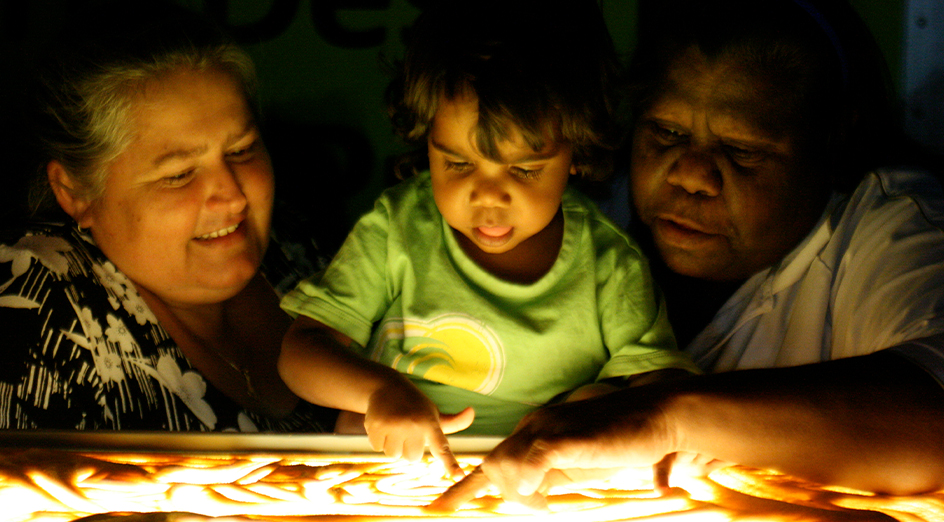Fremantle forward Sam Switkowski has joined researchers from The University of Western Australia in investigating ways to bring fresh water to remote Aboriginal communities in the Goldfields of WA as part of a plan to tackle the devastating effects of kidney disease and type 2 diabetes among locals.
The AFL footballer, in his final year of an environmental engineering degree at RMIT University, is part of a team from Optimos, D2K Information, RMIT, UWA and the University of Queensland who’ve been designing and testing pilot technologies to remove nitrate from drinking water.
It follows ground-breaking research undertaken as part of the Western Desert Kidney Health Project (WDKHP) which found that nitrate contaminated drinking water was a contributing factor to higher than expected rates of kidney disease and type 2 diabetes in the Goldfields.
Dr Christine Jeffries-Stokes, from UWA’s Medical School and the Rural Clinical School of WA, said the WDKHP study took place between 2010 and 2014 and covered an area larger than the state of Victoria in the Goldfields and Western Desert which starts 500km east of Perth and extends 2000km to the border with South Australia.
It saw health assessments carried out on 597 adults and 502 children in five small towns and six remote Aboriginal communities, representing almost 80 per cent of the Aboriginal population, with risk factors for kidney disease and type 2 diabetes present in participants of all ages, including children as young as two.
“The high levels of acid and blood in the urine of both Aboriginal and non-Aboriginal participants suggests factors contributing to chronic metabolic acidosis and inflammation or irritation of the urinary tract need to be explored, including drinking water which is known to be poor,” said Dr Jeffries-Stokes, who worked on the project with co-chief investigator Annette Stokes.
“In most of the study, the communities’ drinking water is heavily contaminated with nitrates and, in at least one community, uranium. One of the effects of uranium ingestion is kidney inflammation and damage, which is exacerbated by the presence of nitrate and the formation of uranyl nitrate.”
In two communities – Mulga Queen and Mount Margaret – a 2020 review by the Western Australian Auditor General showed there’d been no improvement in water quality over the past five years, and nitrate levels remained above international and Australian health guidelines, Dr Jeffries-Stokes said.

Image: Dr Christine Jeffries-Stokes, Mark Stokes and Annette Stokes involved in artwork during the WDKHP.
As the only WA-based person in the RMIT team who’d been tasked with looking at water treatment options, Mr Switkowski was able to visit Mulga Queen and surrounding communities in June this year to take water samples and speak directly to locals about their drinking water challenges.
“The other three members of my team – Matthew Barham, Matt Fitzpatrick and Lara Stovell – are currently testing three potential water treatment systems at RMIT in Melbourne to work out which will be the most efficient and the most feasible to implement,” Mr Switkowski said.
“For me personally, it’s been fantastic to experience another side of WA and to have been welcomed into several indigenous communities, thanks to Christine and her partner Geoffrey. It’s clear these communities aren’t getting the essential services they deserve, and as a result their health and wellbeing is at a higher risk.
“I’m incredibly grateful for the experience the project has given me and the opportunity that RMIT has provided in doing something purposeful and helpful for indigenous people. It’s ignited a passion in me and a determination to make a positive impact to those who don’t have access to clean and safe drinking water across Australia and the world.”
“It’s ignited a passion in me and a determination to make a positive impact to those who don’t have access to clean and safe drinking water across Australia and the world.”
Sam Switkowski
Dr Jeffries-Stokes said the increasing burden of kidney disease and type 2 diabetes is a global problem, especially for remote and Indigenous populations. In Australia, the average life expectancy of Aboriginal Australians is at least eight years lower than for non-Aboriginal Australians.
“This disparity is more marked in remote areas and contributing factors are the effects of type 2 diabetes, kidney disease and their associated conditions and complications. Prior to our study, type 2 diabetes had been found to be the leading cause of avoidable mortality for Aboriginal residents of the Goldfields region, accounting for 20 per cent of deaths,” she said.
“Diseases of the kidney accounted for six per cent of all avoidable deaths in the region and the area had been estimated to have the second highest rate of end-stage kidney disease in Australia. Until our study there hadn’t been too much investigation into the reasons why.”







